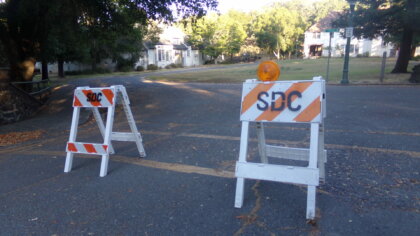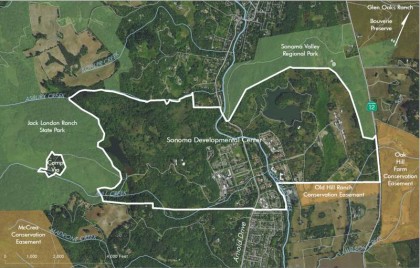On creating a vision for Eldridge and the Sonoma Developmental Center
Part of the three-year specific planning process involves generating an overarching vision for the property.
By Tracy Salcedo | For The Sun
Sonoma County’s planning process for the former Sonoma Developmental Center (SDC) has kicked into high gear. Consultant Dyett and Bhatia has been hired by the county to develop the plan for the sprawling Eldridge complex, and the Planning Advisory Team (PAT), comprised of community members with specific expertise, is in place.
These are big steps forward. And the timing is perfect: The SDC Coalition, which hosted the Eldridge Vision Workshop at Hanna Boys Center in June 2019, has (finally) released its summary report on the event.
Why is the timing right? Part of the three-year specific planning process involves generating an overarching vision for the property. The way I think of such a vision is as a mirror: when any proposal is held up to it, the vision should be reflected back. It’s a homing beacon, an aspiration. And it must be defined by the community it guides, in this case Eldridge and its twin village Glen Ellen, Sonoma Valley, Sonoma County, and the greater North Bay Area.
Reimagining what Eldridge will look like when the state of California steps away began shortly after the state announced closure of the SDC five years ago. Community-led workshops were held in 2015, 2018, and finally in June 2019, all allowing stakeholders to voice their hopes and dreams for the campus and surrounding woodlands, reservoirs, and meadows.
The goals of June 2019 Eldridge Vision Workshop were to inform the public about what a specific plan is, and to gauge support for a draft vision statement and guiding principles distilled from the visions and principles articulated in previous workshops. Participants were given copies of the draft statements and asked to indicate their agreement by affixing green dots to the text, or to indicate reservations or the desire to see modifications by affixing yellow dots. Written feedback and comments were also solicited. Using this format, organizers were able to gather hard data about support for specific themes that have been voiced over time.
The draft vision statement sought to capture the key themes: “Eldridge is a place where people of diverse backgrounds and interests live and work together, where natural resources are conserved and enhanced, concepts of sustainability and resiliency are put into practice, cultural legacies are honored, and compatibility with surrounding communities is preserved.”
When the numbers were tallied, 83 percent of participants supported the statement as written. Those who gave it a yellow dot primarily offered feedback that strengthened or clarified these themes, such as placing more emphasis on the property’s cultural, historical, and ecological assets.
The guiding principles expanded on the themes expressed in the vision statement.
The most resounding support – 92 percent – was for the principle addressing preservation of Eldridge’s wildlands: “Eldridge’s open space and wildlife corridor lands will be permanently protected and managed to ensure environmental stewardship and continued public recreational use.”
Other guiding principles, which addressed sustainability, the specific planning process itself, educational and employment opportunities, preservation of historic and cultural assets, and implementation of the plan, garnered percentages of approval that ranged from 69 to 82 percent.

The guiding principle addressing how people will live in Eldridge – the provision of housing on the property – drew support from only 54% of participants, with the rest affixing yellow dots and offering comments or modifications to the proposed language. This should come as no surprise: there’s no easy fix to the affordable housing crisis that besets Sonoma Valley (and the rest of California, for that matter). But in collating comments and concerns, several important considerations gelled. What makes housing “affordable” should be clearly defined. The density of housing should be scaled so that the rural feel of both Eldridge and Glen Ellen are preserved.
Provision of supportive services, such as transportation, should be part of the mix. Food for thought for all concerned, from local residents to the consultant to the ultimate developer.
It would take too much space in this column to include all the proposed language, or to go into great detail about all of the thoughtful and informed comments and suggestions provided by participants. But each is important, so organizers have passed along the raw data, along with the summary report, to the county, the consultant, and the PAT. The hope is that it will inform, and maybe even expedite, the community engagement process getting underway.
The workshop summary, where you can read the draft statements and the primary takeaways from feedback, is available online at transformsdc.com. Read it, share it, and talk about it.
And stay engaged as the county initiates community engagement as part of its specific planning process, the next opportunity to help frame the vision for Eldridge.
Tracy Salcedo is a Glen Ellen-based writer and editor, and as a member of the Glen Ellen Forum has been active on various committees working on the transformation of SDC, including the SDC Coalition team that organized the June 15 Eldridge Vision Workshop.
One thought on “On creating a vision for Eldridge and the Sonoma Developmental Center”
Comments are closed.





Use,open space public use…